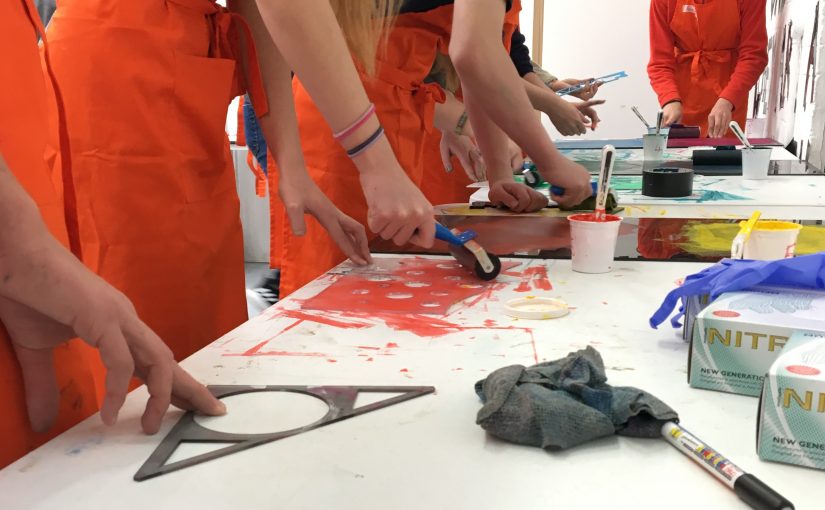Katie had ambitious plans for us during this session!
One group began by selecting from last weeks’ artworks to create a showcase of the processes and ideas they had explored. Each member had their own individual publication that documented their outcomes from the previous week. As a group they worked together to design a collaborative cover which was then printed on the Risograph using coloured paper and the ‘Riso’ trademark fluro inks. Georgia de Buriatte (Saturday Club assistant and BA Printmaking 3rd year student) shared her bookbinding skills with the group, showing us how to fold and saddle stitch the pages so we all had our own finished book.
The other half of the group became an editorial team; selecting images and developing text about the Saturday Club projects this year, which will become a publication for us to keep and share. Katie talked about working with Studio 3015 at Winchester School of Art and the process of designing in a team to create books, magazines, posters, prospectus and all kinds of printed matter. She showed us some examples of the projects she has worked on and how different printing methods, binding and paper choices all affect the visual message of the content. The publication team annotated and edited text about each workshop session and chose from the stock of photographs taken each week to showcase both the outcomes as well as the materials and methods used.
Half way through the morning we swapped around so everyone got a chance to use the mighty Risograph, make their own book and have their input into the publication.
The WSA Saturday Club year book will also be printed on the Risograph, when it is finished we will share on the blog so keep your eyes peeled…
Here is bit more about the Risograph:
“The Risograph is an environmentally friendly and cost effective printer, which uses soy-based inks to produce unique outcomes. Each stencil (master) is made from thermal sensitive paper and unlike offset printing it only takes a single print for the screen to be fully inked and ready to print thousands of copies. The Risograph is extremely energy efficient and generates a minimal amount of waste.” – Hato Press




